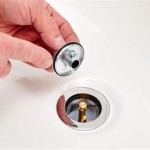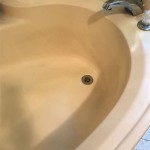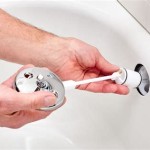Are Bathtub Mats Sanitary? Examining Hygiene and Maintenance
Bathtub mats are a common household item designed to prevent slips and falls in the shower or bathtub. While prioritizing safety, it is essential to consider the sanitary implications of using these mats. The warm, moist environment of a bathroom, coupled with the porous nature of many bathtub mat materials, creates a breeding ground for bacteria, mold, and mildew. Understanding the potential hygiene concerns and implementing proper maintenance routines are critical to ensuring a safe and sanitary bathing experience.
The very purpose of a bathtub mat – to provide a non-slip surface – often contributes to its unsanitary potential. The texture designed for grip, whether in the form of suction cups, ridges, or textured surfaces, creates numerous nooks and crannies. These areas trap soap scum, body oils, hair, and other organic matter. This trapped debris provides a food source for microbial growth, leading to discoloration, unpleasant odors, and potentially harmful health consequences.
The Microbial Landscape of Bathtub Mats
The bathroom environment is inherently susceptible to microbial growth. High humidity levels, frequent temperature fluctuations, and the presence of organic materials contribute to this. Bathtub mats, in particular, become prime targets for bacteria, mold, and mildew due to constant exposure to water and the accumulation of bath products. Common microorganisms found on unsanitary bathtub mats include:
*Bacteria:
Various types of bacteria thrive in the warm, moist conditions. These can range from harmless skin flora to potentially pathogenic bacteria like *Staphylococcus aureus*, which can cause skin infections. The accumulation of bacteria can also contribute to unpleasant odors. *Mold:
Mold spores are ubiquitous in the environment. When these spores land on a damp surface with sufficient nutrients, they can germinate and grow. Bathtub mats, especially those made of porous materials like rubber or plastic, provide an ideal environment for mold growth. Common mold species found in bathrooms include *Aspergillus*, *Cladosporium*, and *Penicillium*. Mold growth can cause respiratory problems, allergic reactions, and skin irritation in susceptible individuals. *Mildew:
Mildew is a type of mold that typically appears as a flat, grayish or whitish growth on surfaces. It thrives in humid environments and is commonly found on bathroom surfaces, including bathtub mats. While mildew is generally less harmful than some other types of mold, it can still cause allergic reactions and respiratory issues.The presence of these microorganisms not only poses a potential health risk but also degrades the material of the bathtub mat over time. Mold and mildew can stain and weaken the mat, reducing its lifespan and effectiveness.
Material Matters: Porosity and Cleanability
The material composition of a bathtub mat significantly influences its susceptibility to microbial growth and ease of cleaning. Certain materials are more porous than others, providing more opportunities for water and organic matter to penetrate and support microbial colonization. Common materials used in bathtub mats include:
*Rubber:
Rubber bathtub mats are widely available due to their durability and affordability. However, rubber is a porous material that can readily absorb water and trap organic debris. This makes rubber mats prone to mold and mildew growth if not properly maintained. *Plastic (PVC, Vinyl):
Plastic mats are generally less porous than rubber mats, making them slightly more resistant to microbial growth. However, the plasticizers used in some PVC and vinyl mats can provide a food source for certain bacteria and fungi. Over time, these mats can also become brittle and crack, creating additional crevices for debris to accumulate. *Silicone:
Silicone is a non-porous material that is naturally resistant to mold and mildew. Silicone bathtub mats are generally more hygienic than rubber or plastic mats due to their non-absorbent properties and ease of cleaning. They are also more durable and resistant to cracking. *Natural Materials (Wood, Bamboo):
Bathtub mats made of natural materials like wood or bamboo can offer a more aesthetically pleasing option. However, these materials are highly porous and require more diligent maintenance to prevent mold and mildew growth. They typically need to be treated with water-resistant sealants and cleaned regularly to maintain their hygiene.The design of the mat also affects its cleanability. Mats with intricate patterns, deep grooves, or numerous suction cups are more difficult to clean thoroughly than those with simpler designs. The more complex the design, the more places there are for dirt and grime to hide, increasing the risk of microbial growth.
Maintenance and Cleaning Protocols for Bathtub Mats
Regardless of the material, regular cleaning and maintenance are essential for keeping bathtub mats sanitary. A consistent cleaning routine can significantly reduce the risk of microbial growth and extend the lifespan of the mat. Recommended cleaning practices include:
*Rinsing After Each Use:
After each shower or bath, thoroughly rinse the bathtub mat with hot water to remove any soap scum, hair, or other debris. This simple step can prevent the buildup of organic matter that fuels microbial growth. *Hanging to Dry:
Ensure the bathtub mat dries completely after each use. Hang the mat over the side of the tub or shower door, or place it in a well-ventilated area to air dry. Avoid leaving the mat lying flat in the tub, as this traps moisture and promotes mold and mildew growth. Some mats have a loop or hook for easy hanging. *Regular Deep Cleaning:
Perform a deep cleaning of the bathtub mat at least once a week. This involves removing the mat from the tub and cleaning it thoroughly with a disinfectant solution. *Disinfection Solutions:
Several disinfectant solutions can be used to clean bathtub mats effectively. These include: *Bleach Solution:
A diluted bleach solution (e.g., 1/2 cup of bleach per gallon of water) is a powerful disinfectant that can kill bacteria, mold, and mildew. However, bleach can be harsh on some materials and may cause discoloration. Always test the solution on a small, inconspicuous area of the mat before applying it to the entire surface. *Vinegar Solution:
White vinegar is a natural disinfectant that can effectively kill mold and mildew. A solution of equal parts white vinegar and water can be used to clean the mat. Vinegar is a gentler alternative to bleach and is less likely to damage the mat. *Commercial Bathroom Cleaners:
Many commercial bathroom cleaners are formulated to kill bacteria, mold, and mildew. Choose a cleaner that is specifically designed for bathroom surfaces and follow the manufacturer's instructions carefully. *Scrubbing:
Use a scrub brush or sponge to thoroughly scrub the entire surface of the mat, paying particular attention to areas with suction cups, ridges, or textured surfaces. These areas are more likely to harbor dirt and grime. *Rinsing and Drying:
After scrubbing, rinse the mat thoroughly with clean water to remove all traces of the cleaning solution. Hang the mat to dry completely before placing it back in the tub. *Consider Dishwasher Cleaning (If Applicable):
Some bathtub mats, particularly those made of silicone, are dishwasher-safe. Check the manufacturer's instructions to determine if the mat can be cleaned in the dishwasher. If so, place the mat on the top rack and run a normal wash cycle with a mild detergent.In addition to regular cleaning, consider replacing the bathtub mat periodically. Over time, the material can degrade, and it may become difficult to remove all traces of dirt and grime. Replacing the mat every six to twelve months can help maintain a sanitary bathing environment.
For individuals with compromised immune systems, allergies, or respiratory sensitivities, maintaining a scrupulously clean bathtub mat is especially important. The presence of mold and bacteria can exacerbate these conditions and lead to more serious health problems.

Bath Mats Halt Water Damage All Nation Restoration

Sutera Stone Bath Mat Review 2024 Family Handyman

The 3 Best Bathroom Rugs And Bath Mats Of 2024 Reviews By Wirecutter

Which Is The Best Bath Mat Top 9 Materials For Mats Examined Natural Step

Sanitary Bath Floor Mat 40x70 Cm Non Slip Buy S Reviews Zoodmall

Bath Tub Mat Non Slip Bathtub Mats Bathroom Shower With Suction Cups And Drain Holes Machine Washable 39 4x15 8 Inches Blue Com

Sww Pvc Shower Tub Mat Solid Waymart

Sanitary Bath Floor Mat 45x70 Cm Non Slip Tezkar Official Website

Sanitary Thick Memory Foam Bath Mat 50 80 Cm In Lebanon Mobileleb

Sanitary Ware S Window Pvc Shower Mat Uhq
Related Posts








